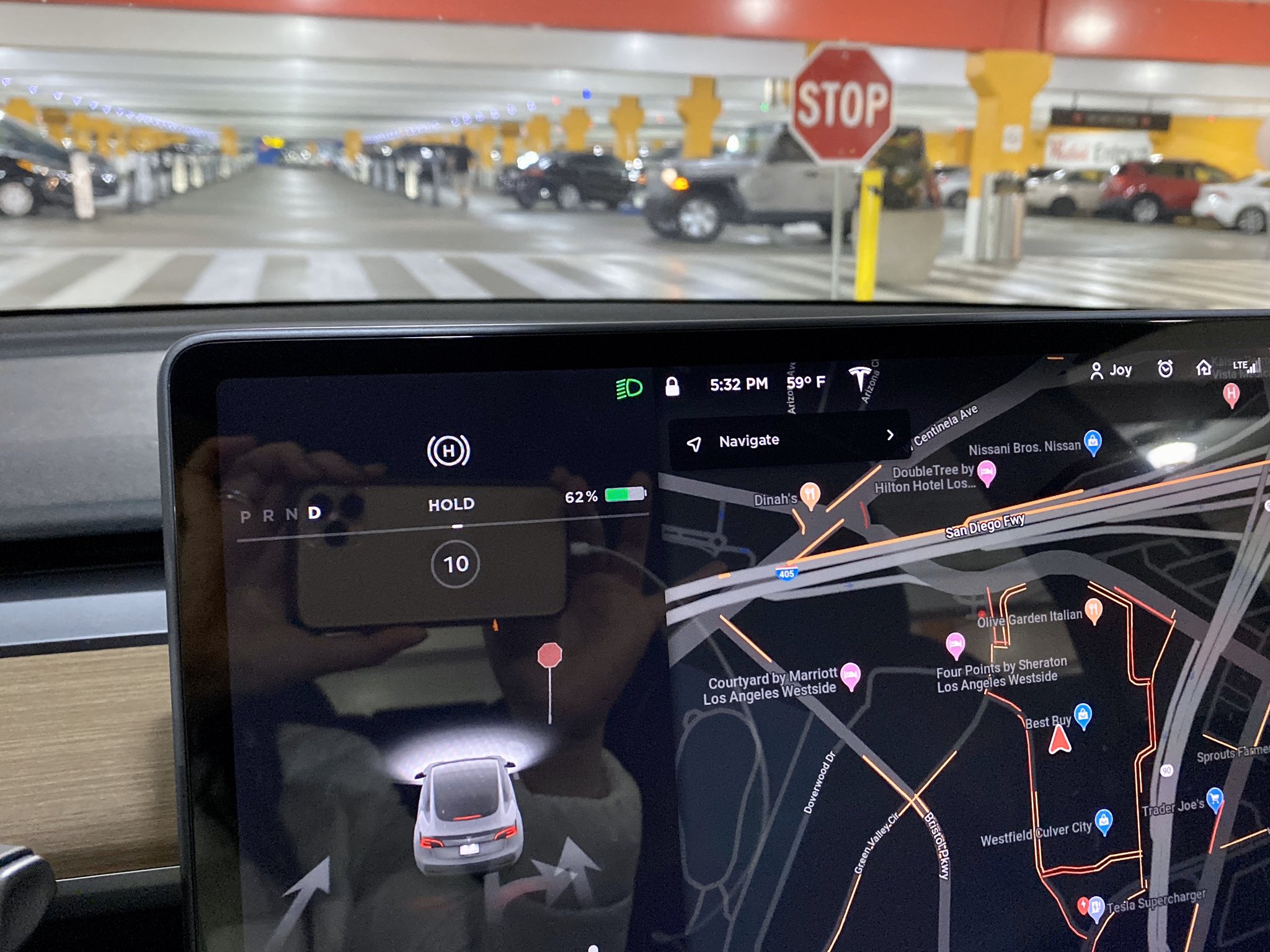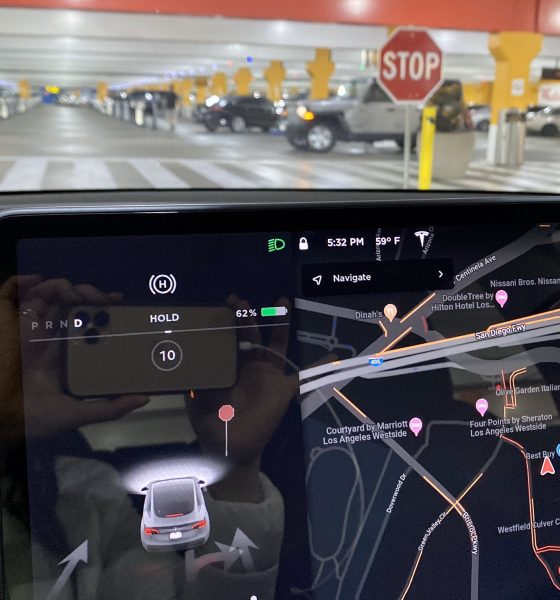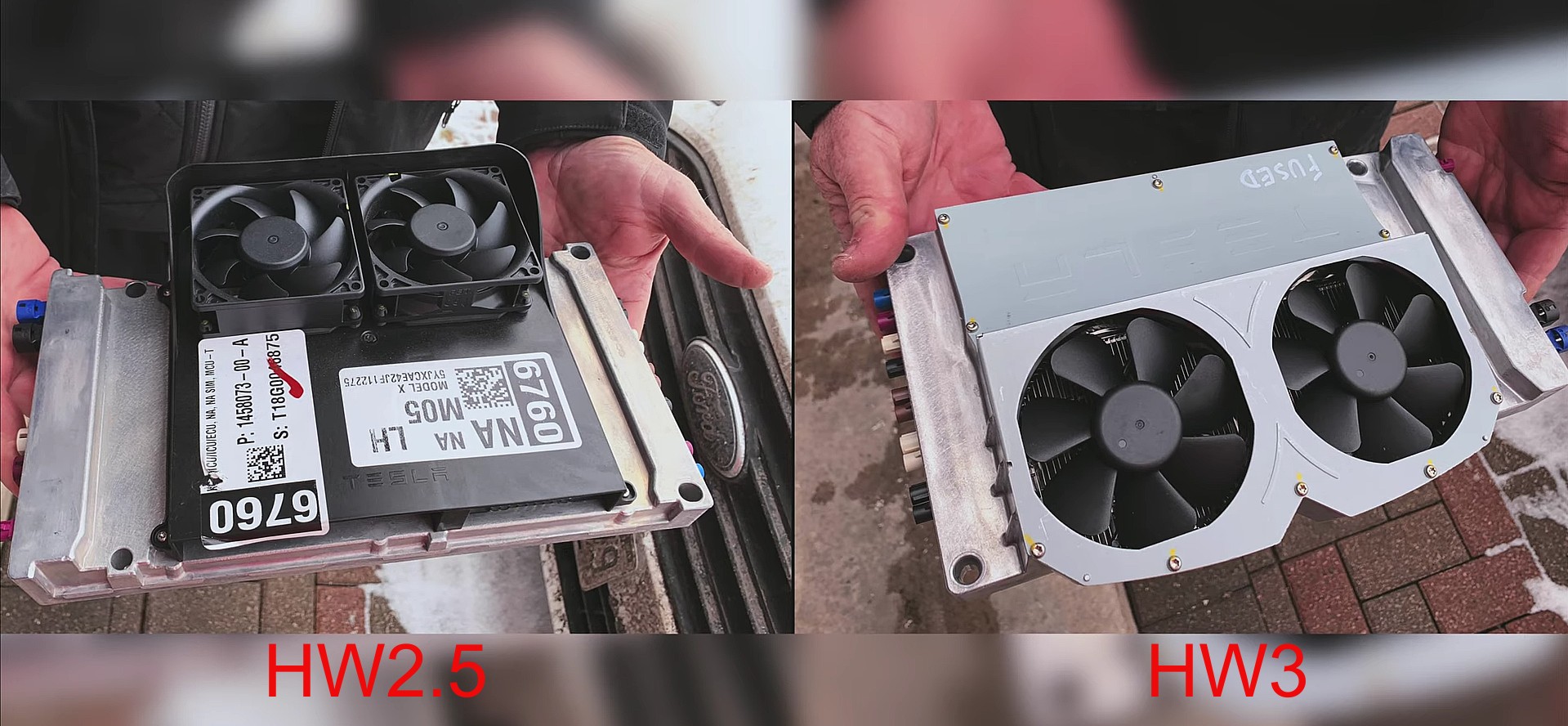

News
Tesla FSD buyers in Europe request HW3 clarity after multiple retrofit delays
Austria-based Raffael Helmhart was one of the Tesla Model 3’s early adopters in his area. Placing his reservation for the all-electric sedan back in April 2016, Helmhart waited over three years before he could get behind the wheel of his Model 3. Such a wait was long, but it was somewhat expected considering Tesla’s challenges in producing and delivering the vehicle.
Helmhart ultimately took delivery of his 2019 Model 3 Long Range Dual Motor AWD in May 2019. His vehicle came loaded with the Full Self-Driving suite, which includes some features and the promise of more advanced automated capabilities over time. Perhaps due to his early reservation, Helmhart’s Model 3 came with Hardware 2.5, the iteration of the company’s Autopilot computer that preceded Hardware 3, a custom computer unveiled on Autonomy Day.

Similar to fellow Model 3 buyers in the United States who also purchased the Full Self-Driving suite, Helmhart and his fellow Tesla owners in Europe were promised a HW3 retrofit. Reports of initial Hardware 3 retrofits for Model S and Model X owners in the US were reported by members of the electric vehicle community in the third quarter of 2019. Model 3 owners with HW2.5 were provided the promised HW3 retrofit soon after.
For Model 3 owners in Europe, the story unfortunately turned out quite different. Initially, Tesla’s official website noted that HW2.5 to HW3 retrofits in Europe would be initiated in early March 2020. This date was eventually updated to the end of March 2020, before being moved once more to July 2020. Much to the chagrin of Tesla owners with HW2.5 Model 3s, the date on Tesla’s site for the promised retrofit was later updated to October 2020, and later, to the end of October 2020.
Recently, Tesla’s site was updated once more, and it noted that HW3 retrofits for Model 3 owners with HW2.5 in Europe were expected in Q2 2021.
Needless to say, Tesla Model 3 early adopters in the region who purchased the FSD suite are getting their patience tested. This became particularly notable in Autumn 2020, when Tesla owners in Norway, the Netherlands, and Switzerland received their HW3 upgrade. Model 3 owners in the rest of Europe only received an updated expected retrofit date.
https://twitter.com/tesla_adri/status/1370828412382760960?s=20
As for Helmhart, he eventually opted to sell his 2019 Model 3 to Denmark a few months ago. He opted to switch to a 2021 Model 3, which featured refresh elements like new headlights, a new center console, a heat pump, and of course, HW3. In a statement to Teslarati, the Tesla owner stated that while it is often claimed that the HW3 upgrade doesn’t really do anything in Europe considering the region’s regulations, his experience with his 2021 Model 3 suggests that this may not really be the case.
For one, there are already a number of key features requiring HW3 that are pertinent for Europe-based Tesla owners. One of these is traffic sign recognition, which works even with basic Autopilot. FSD-specific features such as Traffic Light and Stop Sign Control, a key Full Self-Driving feature and a pivotal part of Tesla’s inner-city driving system, is also allowed in Europe despite the region’s strict regulations. The FSD Preview visualizations are now accessible as well. Ultimately, it appears that the HW3 upgrade does provide a number of improvements to the Tesla ownership experience, and it is one that Tesla Model 3 owners with HW2.5 in Europe continue to wait for until today.
Hopefully, Tesla could straighten out its HW3 retrofit rollout strategy for the majority of Europe. Elon Musk, after all, has always maintained that Tesla’s success is in no small part due to the faith of early adopters who chose to take a chance on a company with little experience building cars. As Tesla grows into one of the world’s most formidable carmakers and the market’s dominating EV force, there is very little reason why perennial delays on after-sales programs such as the HW3 retrofit are still happening.
Don’t hesitate to contact us for news tips. Just send a message to tips@teslarati.com to give us a heads up.

News
Tesla starts showing how FSD will change lives in Europe
Local officials tested the system on narrow country roads and were impressed by FSD’s smooth, human-like driving, with some calling the service a game-changer for everyday life in areas that are far from urban centers.

Tesla has launched Europe’s first public shuttle service using Full Self-Driving (Supervised) in the rural Eifelkreis Bitburg-Prüm region of Germany, demonstrating how the technology can restore independence and mobility for people who struggle with limited transport options.
Local officials tested the system on narrow country roads and were impressed by FSD’s smooth, human-like driving, with some calling the service a game-changer for everyday life in areas that are far from urban centers.
Officials see real impact on rural residents
Arzfeld Mayor Johannes Kuhl and District Administrator Andreas Kruppert personally tested the Tesla shuttle service. This allowed them to see just how well FSD navigated winding lanes and rural roads confidently. Kruppert said, “Autonomous driving sounds like science fiction to many, but we simply see here that it works totally well in rural regions too.” Kuhl, for his part, also noted that FSD “feels like a very experienced driver.”
The pilot complements the area’s “Citizen Bus” program, which provides on-demand rides for elderly residents who can no longer drive themselves. Tesla Europe shared a video of a demonstration of the service, highlighting how FSD gives people their freedom back, even in places where public transport is not as prevalent.
What the Ministry for Economic Affairs and Transport says
Rhineland-Palatinate’s Minister Daniela Schmitt supported the project, praising the collaboration that made this “first of its kind in Europe” possible. As per the ministry, the rural rollout for the service shows FSD’s potential beyond major cities, and it delivers tangible benefits like grocery runs, doctor visits, and social connections for isolated residents.
“Reliable and flexible mobility is especially vital in rural areas. With the launch of a shuttle service using self-driving vehicles (FSD supervised) by Tesla in the Eifelkreis Bitburg-Prüm, an innovative pilot project is now getting underway that complements local community bus services. It is the first project of its kind in Europe.
“The result is a real gain for rural mobility: greater accessibility, more flexibility and tangible benefits for everyday life. A strong signal for innovation, cooperation and future-oriented mobility beyond urban centers,” the ministry wrote in a LinkedIn post.
News
Tesla China quietly posts Robotaxi-related job listing
Tesla China is currently seeking a Low Voltage Electrical Engineer to work on circuit board design for the company’s autonomous vehicles.

Tesla has posted a new job listing in Shanghai explicitly tied to its Robotaxi program, fueling speculation that the company is preparing to launch its dedicated autonomous ride-hailing service in China.
As noted in the listing, Tesla China is currently seeking a Low Voltage Electrical Engineer to work on circuit board design for the company’s autonomous vehicles.
Robotaxi-specific role
The listing, which was shared on social media platform X by industry watcher @tslaming, suggested that Tesla China is looking to fill the role urgently. The job listing itself specifically mentions that the person hired for the role will be working on the Low Voltage Hardware team, which would design the circuit boards that would serve as the nervous system of the Robotaxi.
Key tasks for the role, as indicated in the job listing, include collaboration with PCB layout, firmware, mechanical, program management, and validation teams, among other responsibilities. The role is based in Shanghai.
China Robotaxi launch
China represents a massive potential market for robotaxis, with its dense urban centers and supportive policies in select cities. Tesla has limited permission to roll out FSD in the country, though despite this, its vehicles have been hailed as among the best in the market when it comes to autonomous features. So far, at least, it appears that China supports Tesla’s FSD and Robotaxi rollout.
This was hinted at in November, when Tesla brought the Cybercab to the 8th China International Import Expo (CIIE) in Shanghai, marking the first time that the autonomous two-seater was brought to the Asia-Pacific region. The vehicle, despite not having a release date in China, received a significant amount of interest among the event’s attendees.
Elon Musk
Elon Musk and Tesla AI Director share insights after empty driver seat Robotaxi rides
The executives’ unoccupied tests hint at the rapid progress of Tesla’s unsupervised Robotaxi efforts.

Tesla CEO Elon Musk and AI Director Ashok Elluswamy celebrated Christmas Eve by sharing personal experiences with Robotaxi vehicles that had no safety monitor or occupant in the driver’s seat. Musk described the system’s “perfect driving” around Austin, while Elluswamy posted video from the back seat, calling it “an amazing experience.”
The executives’ unoccupied tests hint at the rapid progress of Tesla’s unsupervised Robotaxi efforts.
Elon and Ashok’s firsthand Robotaxi insights
Prior to Musk and the Tesla AI Director’s posts, sightings of unmanned Teslas navigating public roads were widely shared on social media. One such vehicle was spotted in Austin, Texas, which Elon Musk acknowleged by stating that “Testing is underway with no occupants in the car.”
Based on his Christmas Eve post, Musk seemed to have tested an unmanned Tesla himself. “A Tesla with no safety monitor in the car and me sitting in the passenger seat took me all around Austin on Sunday with perfect driving,” Musk wrote in his post.
Elluswamy responded with a 2-minute video showing himself in the rear of an unmanned Tesla. The video featured the vehicle’s empty front seats, as well as its smooth handling through real-world traffic. He captioned his video with the words, “It’s an amazing experience!”
Towards Unsupervised operations
During an xAI Hackathon earlier this month, Elon Musk mentioned that Tesla owed be removing Safety Monitors from its Robotaxis in Austin in just three weeks. “Unsupervised is pretty much solved at this point. So there will be Tesla Robotaxis operating in Austin with no one in them. Not even anyone in the passenger seat in about three weeks,” he said. Musk echoed similar estimates at the 2025 Annual Shareholder Meeting and the Q3 2025 earnings call.
Considering the insights that were posted Musk and Elluswamy, it does appear that Tesla is working hard towards operating its Robotaxis with no safety monitors. This is quite impressive considering that the service was launched just earlier this year.








